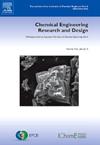Numerical investigation of photovoltaic performance improvement using Al2O3 nanofluid
IF 3.7
3区 工程技术
Q2 ENGINEERING, CHEMICAL
引用次数: 0
Abstract
To further elucidate the impact of fluctuations in environmental temperature and radiation intensity within a day on the temperature and performance of photovoltaic systems with and without nanofluid cooling, this study established a photovoltaic panel temperature and efficiency calculation model based on a nanofluid cooling system that considers the dynamic changes of photovoltaic panel temperature and air temperature over time. An empirical formula for predicting photovoltaic panel efficiency has been derived based on experimental data. Then a PV panel temperature and efficiency calculation model is established and validated. The simulation results show that using nanofluids to cool the PV panel can significantly reduce the temperature and improve the PV efficiency. Compared to the bare PV panel, the average PV panel temperature decreases by 7.99 ℃, 8.48 ℃, and 8.92 ℃ respectively when nanofluid volume fraction is 1 vol%, 3 vol%, and 5 vol%, and it decreases by 8.48 ℃, 9.27 ℃, and 9.94 ℃ respectively when nanofluid mass flow rate is 0.08 m3/h, 0.10 m3/h, and 0.12 m3/h. As the nanofluids' concentration increases, nanofluids' cooling ability in the high temperature range also increases.
利用 Al2O3 纳米流体提高光伏性能的数值研究
为了进一步阐明一天内环境温度和辐射强度的波动对有纳米流体冷却和无纳米流体冷却光伏系统的温度和性能的影响,本研究建立了一个基于纳米流体冷却系统的光伏面板温度和效率计算模型,该模型考虑了光伏面板温度和空气温度随时间的动态变化。根据实验数据推导出预测光伏板效率的经验公式。然后建立并验证了光伏板温度和效率计算模型。模拟结果表明,使用纳米流体冷却光伏板可以显著降低温度,提高光伏效率。与裸光伏板相比,当纳米流体体积分数为 1 vol%、3 vol% 和 5 vol% 时,光伏板平均温度分别降低了 7.99 ℃、8.48 ℃ 和 8.92 ℃;当纳米流体质量流量为 0.08 m3/h、0.10 m3/h 和 0.12 m3/h 时,光伏板平均温度分别降低了 8.48 ℃、9.27 ℃ 和 9.94 ℃。随着纳米流体浓度的增加,纳米流体在高温范围内的冷却能力也随之增加。
本文章由计算机程序翻译,如有差异,请以英文原文为准。
求助全文
约1分钟内获得全文
求助全文
来源期刊

Chemical Engineering Research & Design
工程技术-工程:化工
CiteScore
6.10
自引率
7.70%
发文量
623
审稿时长
42 days
期刊介绍:
ChERD aims to be the principal international journal for publication of high quality, original papers in chemical engineering.
Papers showing how research results can be used in chemical engineering design, and accounts of experimental or theoretical research work bringing new perspectives to established principles, highlighting unsolved problems or indicating directions for future research, are particularly welcome. Contributions that deal with new developments in plant or processes and that can be given quantitative expression are encouraged. The journal is especially interested in papers that extend the boundaries of traditional chemical engineering.
 求助内容:
求助内容: 应助结果提醒方式:
应助结果提醒方式:


